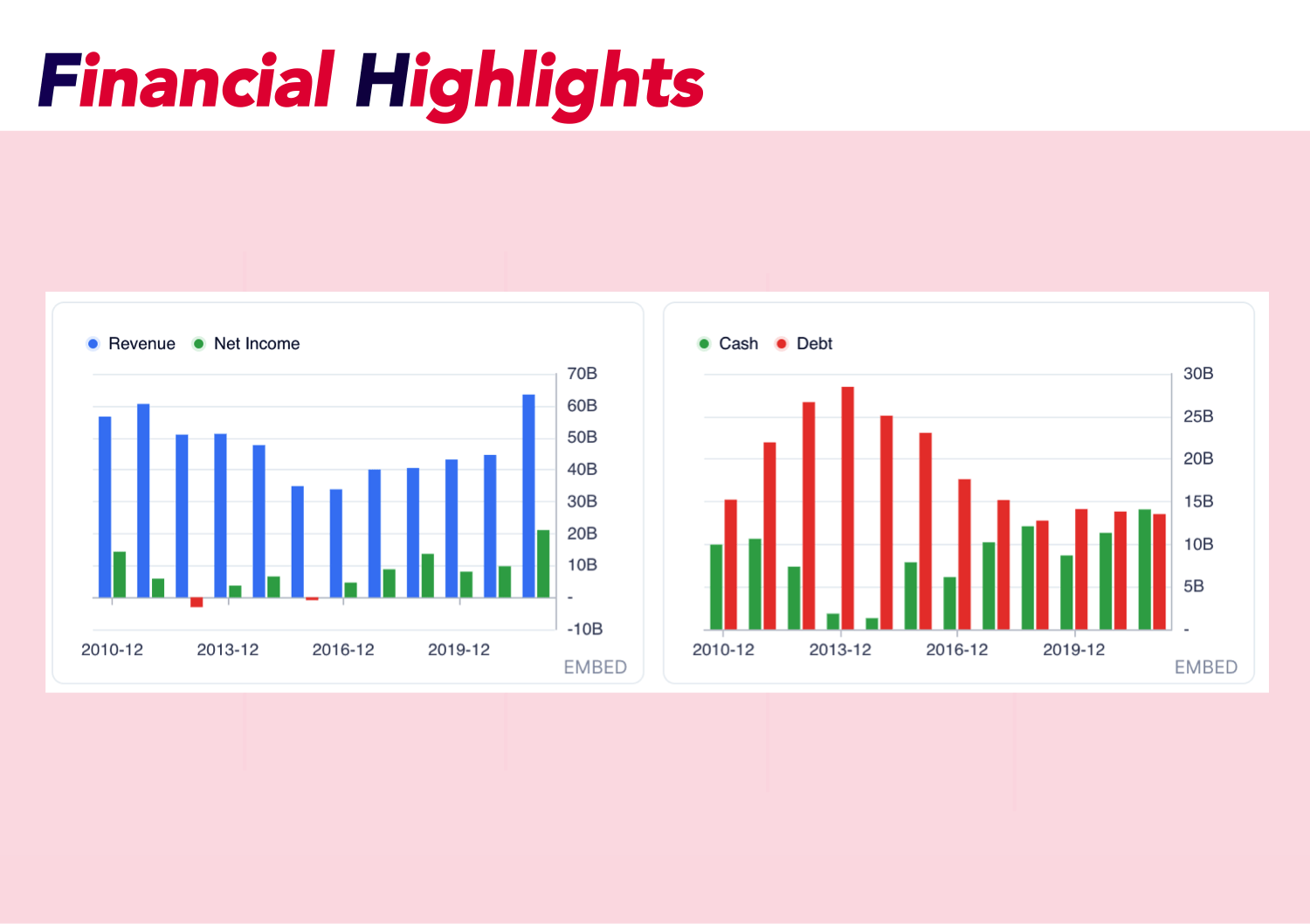Why We Bought in 2021 - Strong financials
- Incredibly well-run, historic company
- Excellent business strategy
- Competitive advantage and a wide moat
- History of maintaining and increasing their dividend payments
Why we're reinvesting in 2022
All of the above is still
true, and now we can add that they have made an
enormous amount of cash in the last calendar year.
In February, Rio Tinto reported its year-end financials, which featured a company
record for cash flow. Whereas Rio Tinto generated free cash flow of
£8.4 billion in 2020, the company set a new high-water mark in 2021, reporting free cash flow of
£14.2 billion. The driving forces behind the
strong cash flow growth came from the aluminium and copper businesses, which accounted for year-over-year free cash flow growth of
155% and
289%, respectively.
Unsurprisingly, this ample cash flow growth has helped the company shore up its balance sheet. Rio Tinto's CEO, Jakob Stausholm, said the company's balance sheet is now "the
strongest it's been for at least 15 years," in the press release accompanying the earnings report. Rio Tinto ended 2021 with a net cash position of
£1.3 billion, representing a considerably more
robust position than where it was at the end of 2020.
If you look at the financials at the moment, it isn't hard to see why the CEO is happy with the current situation:
- Strong financials
- Incredibly well-run, historic company
- Excellent business strategy
- Competitive advantage and a wide moat
- History of maintaining and increasing their dividend payments
Why we're reinvesting in 2022
In February, Rio Tinto reported its year-end financials, which featured a company record for cash flow. Whereas Rio Tinto generated free cash flow of £8.4 billion in 2020, the company set a new high-water mark in 2021, reporting free cash flow of £14.2 billion. The driving forces behind the strong cash flow growth came from the aluminium and copper businesses, which accounted for year-over-year free cash flow growth of 155% and 289%, respectively.


